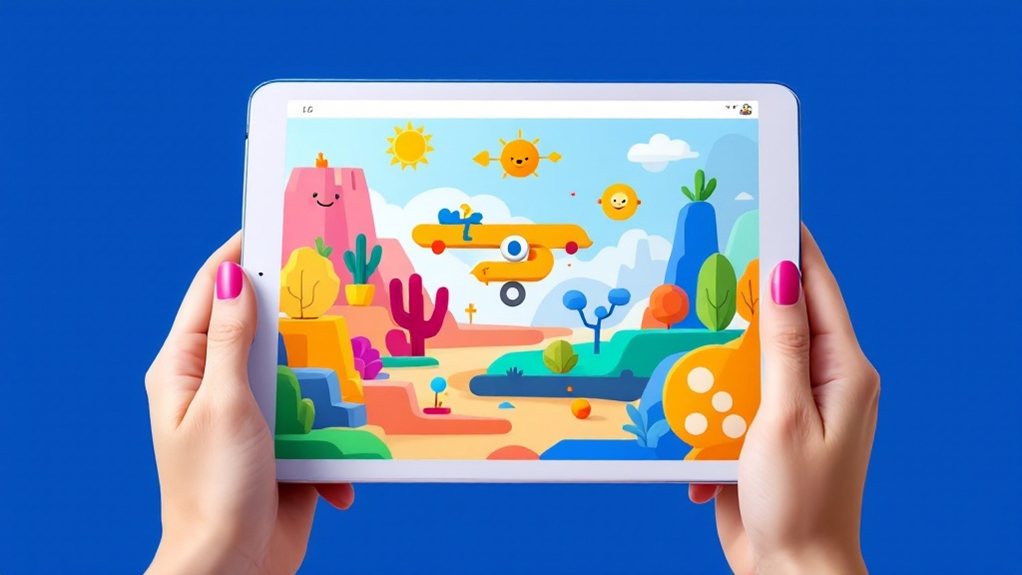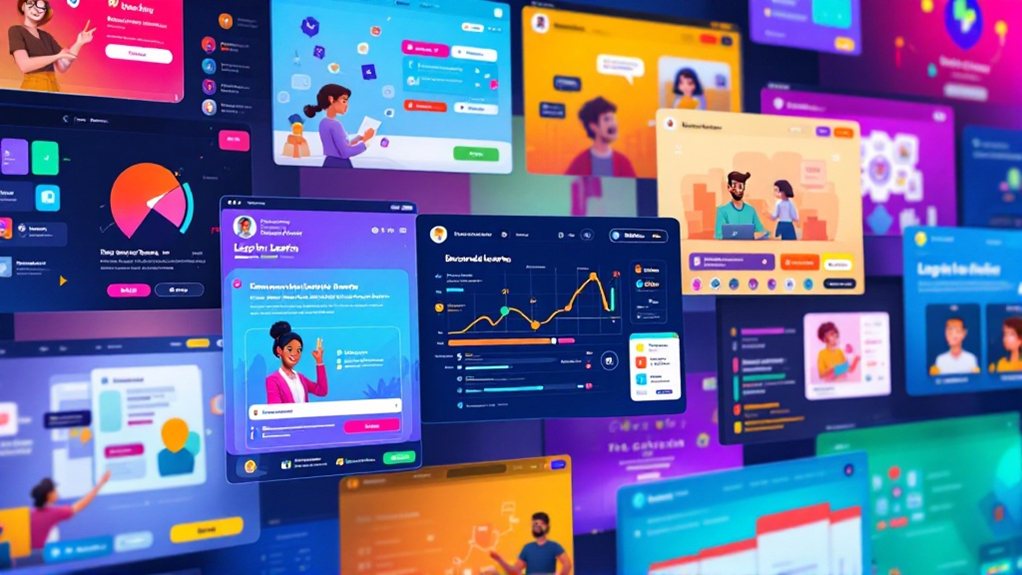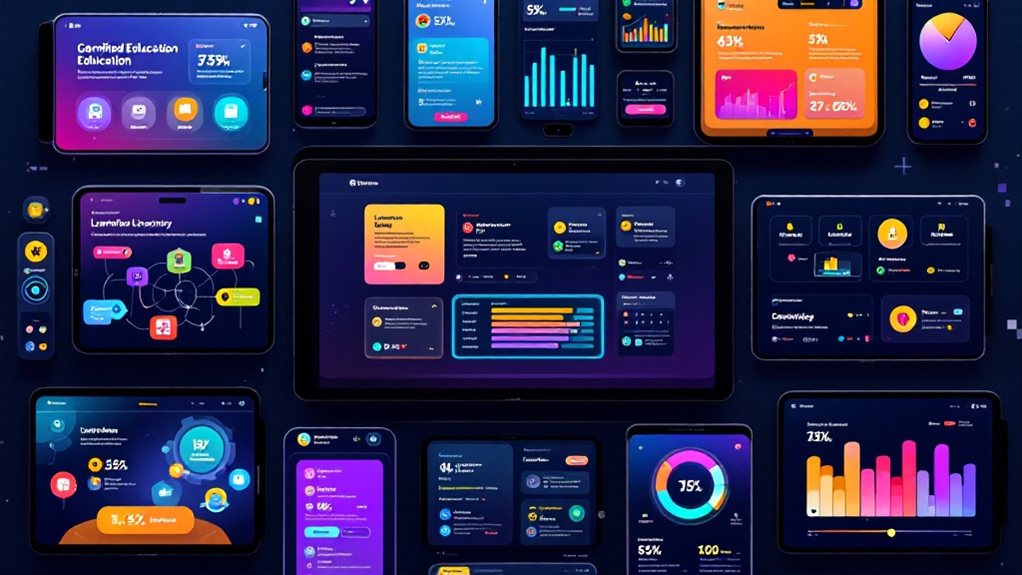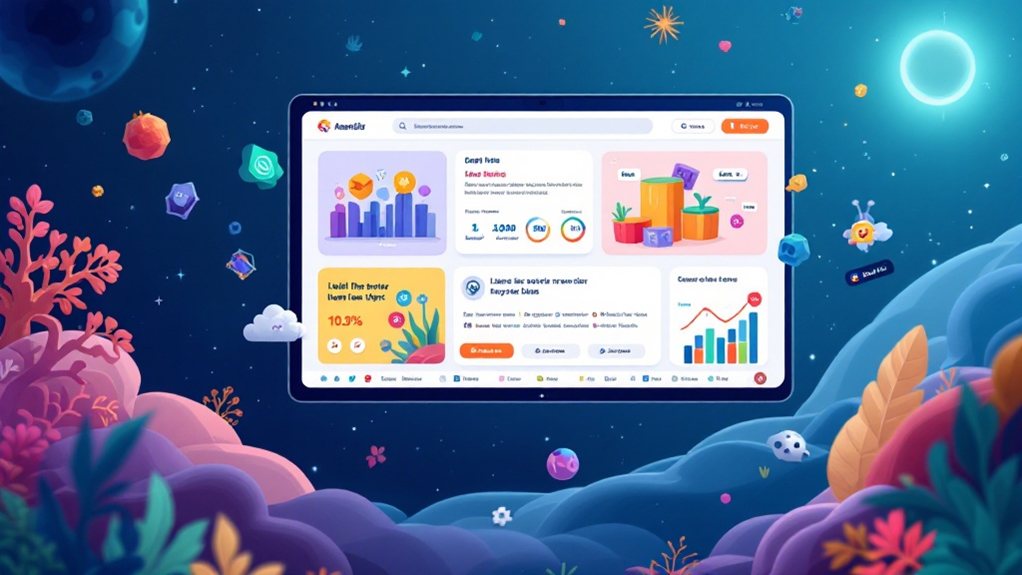Gamified educational platforms leverage user-centric design strategies to create engaging learning experiences. You'll find game mechanics like points and leaderboards to foster a sense of achievement and competition. The intuitive navigation and interactive exercises are complemented by real-time feedback, balancing challenge and reward. Personalized pathways, powered by data and AI, tailor the content and progression to your needs. Explore these gamification elements to unlock a more immersive and enjoyable learning journey.
Key Takeaways
- Leverage game mechanics like points, badges, and leaderboards to create a sense of achievement and competition, motivating user exploration.
- Incorporate intuitive navigation, interactive exercises, and real-time feedback to enhance the user experience and optimize for usability and delight.
- Utilize data and AI to personalize content, difficulty, and progression, tailoring the learning experience to individual needs and preferences.
- Employ gamification elements such as timed challenges, levels, and collectibles to keep learners engaged and incentivize exploration and task completion.
- Provide responsive feedback, progressively unlock new content, and maintain an optimal balance of challenge and ability to reinforce learners' actions and foster a sense of accomplishment.
Engaging User Interactions

Gamified educational platforms thrive on engaging user interactions, which are essential for fostering active participation and learning. Leveraging game mechanics like points, badges, and leaderboards can create a sense of achievement and competition, motivating users to explore content and complete tasks. Moreover, intuitive navigation, interactive exercises, and real-time feedback enhance the user experience, making the learning process more immersive and enjoyable. Designers must carefully balance challenge and reward, ensuring that the platform strikes a harmonious chord between education and entertainment. By prioritizing user engagement, gamified platforms can effectively transform the way students learn, driving better outcomes and fostering a love for lifelong learning.
Intuitive and Responsive UI Design
For gamified educational platforms to truly captivate users, the user interface (UI) must be intuitive and responsive. Intuitive UI design ensures users can easily navigate and interact with the platform, reducing cognitive load and fostering an engaging experience. Responsive design adapts the UI seamlessly across devices, catering to users' preferences and habits. Leverage clear information hierarchy, uncluttered layouts, and intuitive iconography to guide users effortlessly. Prompt feedback, smooth animations, and frictionless interactions reinforce the gamified elements, keeping users immersed. Continuously gather user insights to refine the UI, optimizing for usability and delight. Integrating these principles creates a cohesive, user-centric experience that elevates the gamified educational journey.
Personalized Learning Experiences

How can gamified educational platforms truly personalize the learning experience for each student? By leveraging data and AI, these platforms can tailor content, difficulty, and progression to an individual's needs and preferences. Adaptive algorithms analyze performance and behavior to dynamically adjust the experience. Students feel empowered as they navigate their own paths, unlocking personalized challenges and rewards. Seamless integration of game mechanics enhances engagement and motivation. Rather than a one-size-fits-all approach, personalized learning enables students to thrive at their own pace, building confidence and competence. The result? Increased learner satisfaction, improved outcomes, and a future-ready generation equipped to succeed.
Gamification Elements and Mechanics
Typically, gamified educational platforms leverage a variety of engaging mechanics to immerse learners. Points, leaderboards, and badges motivate you to progress and compete. Timed challenges and levels keep you on your toes, while immediate feedback fuels your sense of achievement. Personalized pathways and branching narratives allow you to customize your learning journey. Collectibles and virtual goods incentivize exploration and task completion. Social features like multiplayer modes and collaborative quests foster a sense of community. By strategically incorporating these mechanics, gamified platforms create an enjoyable, rewarding learning experience that boosts engagement and knowledge retention.
Incorporating Feedback and Progression

Effective gamified educational platforms prioritize incorporating intuitive feedback and progressive mechanics to sustain learner engagement. Responsive feedback, whether through visual cues, point systems, or progress bars, reinforces learners' actions and fosters a sense of accomplishment. Progressively unlocking new content, features, or challenges encourages continued exploration and skill development. This approach aligns with the principles of flow theory, maintaining an optimal balance of challenge and ability to prevent boredom or frustration. By thoughtfully integrating these elements, designers can create engaging learning experiences that motivate students to persist, iterate, and grow. Ultimately, the seamless integration of feedback and progression is key to crafting gamified educational platforms that captivate and empower learners.
Accessibility and Inclusive Design
Alongside the captivating feedback and progression mechanics, crafting accessible and inclusive gamified educational platforms is paramount. Ensure your designs cater to diverse learners by incorporating assistive technologies, such as screen readers and captions. Optimize text readability, navigation, and interactions for users with visual, auditory, or motor impairments. Provide flexible options that accommodate individual learning styles and abilities. Embrace universal design principles to foster an engaging and equitable experience for all. Remember, accessibility isn't an afterthought – it's a core tenet of creating platforms that truly empower learners. Prioritize inclusive design from the outset to deliver educational games that are welcoming, empowering, and transformative for every user.

